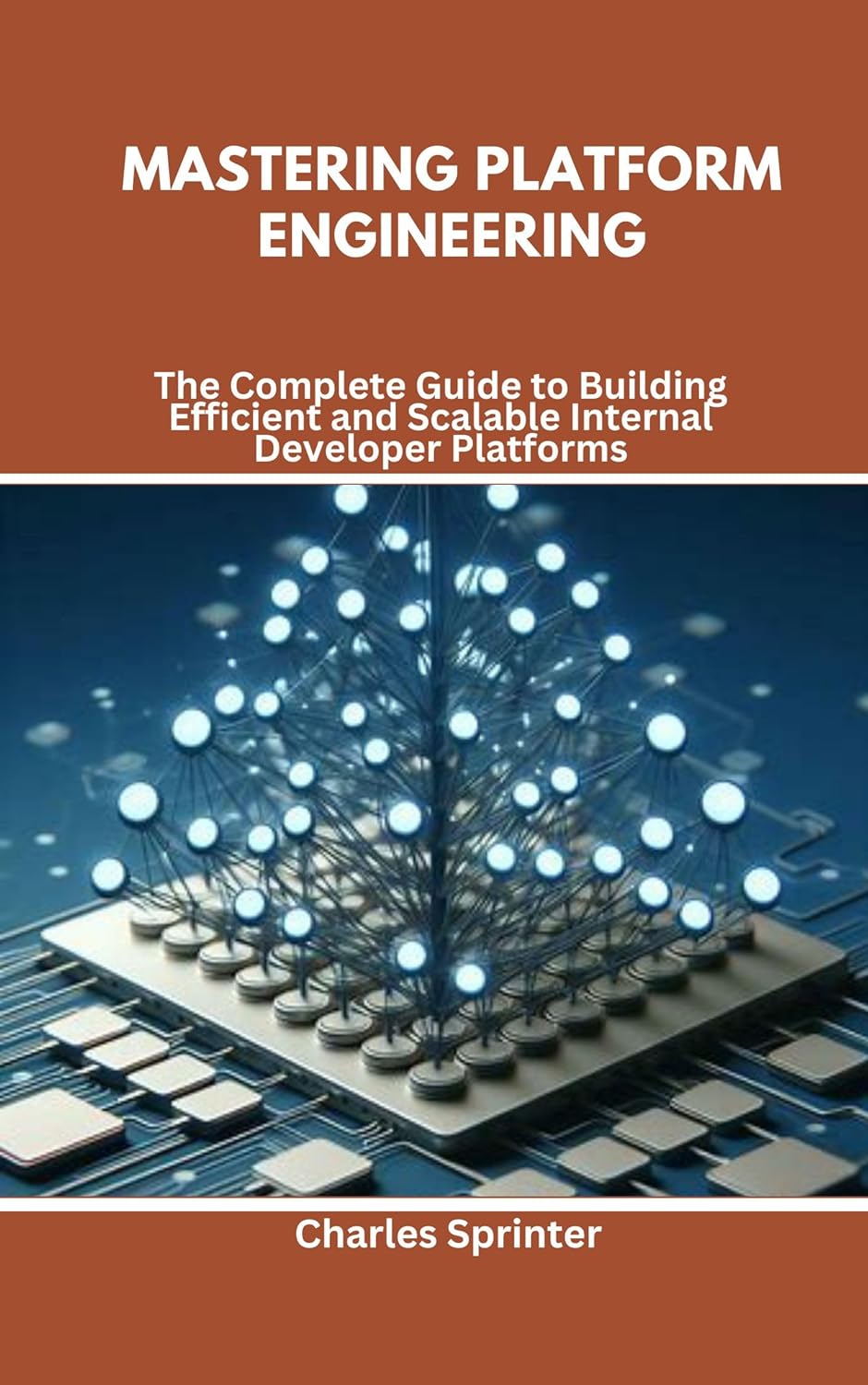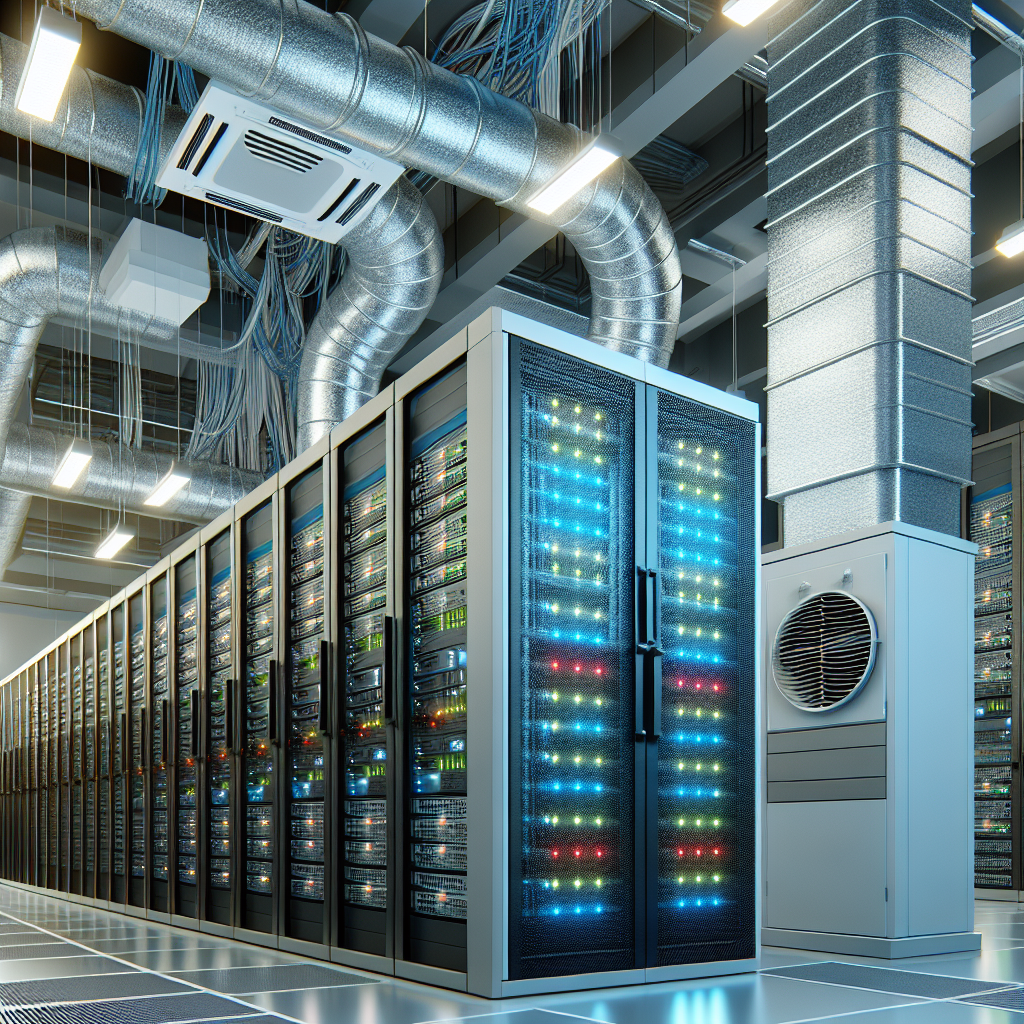Your cart is currently empty!
Tag: Efficient

Top Strategies for Efficient Data Center Troubleshooting
Data centers are the heart of any organization’s IT infrastructure, housing the critical systems and equipment that keep businesses running smoothly. When issues arise in a data center, it’s crucial to troubleshoot and resolve them quickly to minimize downtime and prevent any potential data loss or system failures. Here are some top strategies for efficient data center troubleshooting:1. Monitor and Analyze Performance Metrics: Data center monitoring tools can provide real-time insights into the performance of your systems and equipment. By analyzing key metrics such as CPU usage, memory utilization, network traffic, and temperature levels, you can quickly identify any potential issues and take proactive measures to address them before they escalate.
2. Implement a Comprehensive Documentation System: Keeping detailed documentation of your data center infrastructure, including network diagrams, equipment configurations, and troubleshooting procedures, can help you quickly pinpoint the root cause of any issues and streamline the troubleshooting process. Make sure your documentation is up to date and easily accessible to all relevant team members.
3. Conduct Regular Audits and Maintenance Checks: Regular audits and maintenance checks of your data center equipment can help identify potential issues before they cause any disruptions. Schedule routine inspections of your hardware, software, and network infrastructure to ensure everything is functioning properly and address any issues promptly.
4. Utilize Remote Monitoring and Management Tools: Remote monitoring and management tools can allow you to proactively monitor and manage your data center infrastructure from anywhere, enabling you to quickly address any issues as soon as they arise. These tools can provide alerts for potential problems, automate routine tasks, and streamline the troubleshooting process.
5. Establish a Clear Escalation Path: In the event of a critical issue in your data center, it’s important to have a clear escalation path in place to ensure that the problem is addressed promptly and effectively. Establish a hierarchy of team members responsible for troubleshooting and resolving issues, and make sure everyone understands their roles and responsibilities in the event of an emergency.
6. Implement Redundant Systems and Backup Plans: Redundancy is key to ensuring the reliability and availability of your data center infrastructure. Implement redundant systems, backup power supplies, and data replication strategies to minimize the impact of any potential failures and ensure continuity of operations in the event of a disaster.
By following these top strategies for efficient data center troubleshooting, you can minimize downtime, prevent data loss, and ensure the continued reliability and performance of your IT infrastructure. With proactive monitoring, comprehensive documentation, regular maintenance checks, remote management tools, clear escalation paths, and redundant systems in place, you can quickly identify and resolve any issues that may arise in your data center, keeping your business running smoothly and securely.

Best Practices for Efficient Data Center IT Operations
In today’s digital age, data centers are crucial for businesses to store and manage their vast amounts of data. With the increasing demand for faster processing speeds and greater storage capacity, data center IT operations have become more complex and challenging. To ensure smooth and efficient operations, it is essential for data center managers to follow best practices.Here are some best practices for efficient data center IT operations:
1. Regular maintenance: Regular maintenance of hardware, software, and networking equipment is essential to keep data center operations running smoothly. This includes updating software, replacing outdated hardware, and ensuring that all systems are functioning optimally.
2. Monitoring and analytics: Implementing monitoring tools and analytics software can help data center managers identify potential issues before they escalate. By continuously monitoring performance metrics, managers can proactively address any issues and prevent downtime.
3. Efficient cooling and power management: Data centers consume a significant amount of energy for cooling and powering servers and networking equipment. Implementing energy-efficient cooling systems and power management strategies can help reduce energy costs and improve overall efficiency.
4. Disaster recovery planning: Data center managers should have a comprehensive disaster recovery plan in place to ensure business continuity in the event of a natural disaster or system failure. Regularly testing backup systems and data recovery processes is essential to minimize downtime and data loss.
5. Security measures: Data centers store sensitive information, making them a prime target for cyber attacks. Implementing robust security measures, such as firewalls, encryption, and access controls, can help protect data from unauthorized access and ensure compliance with industry regulations.
6. Automation: Implementing automation tools can help streamline data center operations and reduce the risk of human error. Automation can be used for tasks such as provisioning resources, monitoring performance, and managing backups.
7. Scalability: As business needs evolve, data center IT operations must be able to scale to accommodate growth. Implementing scalable infrastructure and flexible solutions can help data centers adapt to changing requirements without compromising efficiency.
By following these best practices, data center managers can ensure efficient IT operations and minimize downtime. Ultimately, efficient data center operations are essential for businesses to stay competitive in today’s fast-paced digital landscape.

The Importance of Efficient Data Center Cooling Solutions
Data centers are crucial for storing and processing large amounts of data for businesses and organizations. With the increasing demand for data storage and processing capabilities, data centers are becoming more prevalent and necessary in today’s digital world. However, one of the biggest challenges that data centers face is managing the heat generated by the servers and other equipment housed within them. This is where efficient data center cooling solutions come into play.Efficient data center cooling solutions are essential for maintaining optimal operating conditions within a data center. Without proper cooling, the heat generated by servers and other equipment can quickly accumulate, leading to overheating and potential equipment failures. This can result in costly downtime and disruptions to operations, as well as potential data loss and damage to equipment.
There are several different types of cooling solutions that can be used in data centers, including air conditioning units, chillers, and cooling towers. Each of these solutions has its own benefits and drawbacks, and the best option will depend on factors such as the size of the data center, the amount of heat generated, and the budget available for cooling.
One of the most popular and effective data center cooling solutions is the use of precision air conditioning units. These units are designed to provide precise temperature and humidity control within the data center, ensuring that the equipment remains cool and functioning properly. Precision air conditioning units are energy-efficient and can be customized to meet the specific cooling needs of a data center.
Another important data center cooling solution is the use of containment systems. Containment systems help to isolate hot and cold air within the data center, preventing the mixing of air streams and improving the overall efficiency of the cooling system. By containing the hot air generated by servers and directing it away from the equipment, containment systems can help to reduce energy consumption and lower cooling costs.
In addition to these cooling solutions, data centers can also benefit from the use of advanced monitoring and control systems. These systems can help data center operators to monitor temperature and humidity levels in real-time, making it easier to identify and address potential cooling issues before they escalate. By implementing efficient data center cooling solutions and monitoring systems, data center operators can ensure the reliability and performance of their equipment while reducing energy consumption and operating costs.
In conclusion, efficient data center cooling solutions are essential for maintaining the optimal operating conditions within a data center. By investing in the right cooling solutions and monitoring systems, data center operators can ensure the reliability and performance of their equipment while reducing energy consumption and operating costs. With the increasing demand for data storage and processing capabilities, efficient data center cooling solutions have never been more important.

The Importance of Efficient Data Center Storage Solutions
Data centers play a crucial role in the modern digital age, serving as the backbone for storing, processing, and managing vast amounts of data. With the exponential growth of data being generated daily, it has become increasingly vital for data centers to have efficient storage solutions in place to ensure smooth operations and optimal performance.Efficient data center storage solutions are essential for several reasons. Firstly, they help improve the overall performance of the data center by enhancing data accessibility and reducing latency. This means that data can be retrieved and processed more quickly, leading to faster response times and improved user experience. With the rise of real-time applications and services, such as online gaming and video streaming, speed and reliability are critical factors that can make or break a business.
Additionally, efficient storage solutions help optimize resource utilization and reduce operational costs. By efficiently managing data storage and eliminating unnecessary redundancies, data centers can make better use of their hardware resources and reduce the amount of physical storage space required. This not only lowers energy consumption and cooling costs but also extends the lifespan of storage hardware, leading to overall cost savings in the long run.
Furthermore, efficient storage solutions are crucial for ensuring data security and compliance. With the increasing number of cyber threats and stringent data privacy regulations, data centers must implement robust security measures to protect sensitive information. By using efficient storage solutions with built-in encryption and data protection features, data centers can safeguard their data against unauthorized access and prevent data breaches.
Moreover, efficient storage solutions enable data centers to scale and adapt to changing business needs more effectively. As data volumes continue to grow, data centers must be able to expand their storage capacity quickly and seamlessly. Efficient storage solutions that support scalability and flexibility allow data centers to easily add or remove storage resources as needed, without disrupting operations or incurring additional costs.
In conclusion, efficient data center storage solutions are essential for ensuring the performance, reliability, and security of modern data centers. By investing in the right storage technologies and strategies, data centers can improve operational efficiency, reduce costs, enhance data security, and adapt to changing business requirements. As data continues to be the lifeblood of businesses and organizations, having efficient storage solutions in place is no longer a luxury but a necessity in today’s digital landscape.

Case Studies: Successful Implementation of Energy Efficient Data Centers
Data centers are essential for storing, processing, and managing vast amounts of digital information. However, these facilities consume a significant amount of energy to power servers, cooling systems, and other equipment. As the demand for digital services continues to grow, the need for energy-efficient data centers has become increasingly important.In recent years, many companies have made significant investments in transforming their data centers into more energy-efficient operations. By implementing innovative technologies and best practices, these companies have not only reduced their environmental footprint but also achieved significant cost savings. Let’s take a look at some case studies of successful implementation of energy-efficient data centers.
1. Google:
Google is a pioneer in building energy-efficient data centers. The tech giant has invested heavily in renewable energy sources such as wind and solar power to power its data centers. In addition, Google has implemented advanced cooling technologies, such as using seawater for cooling, to reduce energy consumption. As a result, Google’s data centers are among the most energy-efficient in the industry, and the company has achieved its goal of powering its operations with 100% renewable energy.
2. Facebook:
Facebook has also made significant strides in improving the energy efficiency of its data centers. The social media giant has adopted a holistic approach to energy efficiency, including using advanced cooling techniques, optimizing server efficiency, and investing in renewable energy projects. Facebook’s data centers are now among the most energy-efficient in the world, and the company has committed to reducing its greenhouse gas emissions by 75% by 2020.
3. Microsoft:
Microsoft has implemented a range of energy-saving measures in its data centers, including using advanced power management software, optimizing server configurations, and investing in renewable energy sources. The tech giant has also partnered with local utilities to increase the use of renewable energy in its data centers. Microsoft’s efforts have resulted in significant cost savings and a reduced environmental impact.
4. Amazon:
Amazon has also taken steps to improve the energy efficiency of its data centers. The e-commerce giant has implemented innovative cooling technologies, such as using outside air for cooling, to reduce energy consumption. In addition, Amazon has invested in renewable energy projects to power its data centers. These efforts have helped Amazon achieve significant energy savings and reduce its carbon footprint.
In conclusion, these case studies demonstrate that energy-efficient data centers are not only beneficial for the environment but also for companies’ bottom line. By implementing innovative technologies and best practices, companies can reduce their energy consumption, save money, and create a more sustainable future. As the demand for digital services continues to grow, it is essential for companies to prioritize energy efficiency in their data center operations.

MASTER CHATGPT IN 3 DAYS: Leverage Artificial Intelligence to Stand Out and be More Efficient
Price: $4.99
(as of Dec 16,2024 13:53:58 UTC – Details)Customers say
Customers find the book useful and engaging, offering clear explanations and practical tips for real-world applications. They appreciate the well-organized structure that makes it suitable for users of all levels. The author’s enthusiasm for the topic is infectious, sparking curiosity and providing a starting point. Readers value the promise of lifetime updates and up-to-date details. However, opinions differ on the language quality – some find it easy to read and understand, while others report grammatical errors and confusing text.
AI-generated from the text of customer reviews
Are you looking to master ChatGPT in just 3 days? With the power of artificial intelligence at your fingertips, you can stand out and be more efficient than ever before. In this post, we’ll show you how to leverage ChatGPT to its fullest potential and become a pro in no time.ChatGPT is a cutting-edge AI tool that can generate human-like responses to text inputs, making it perfect for chatbots, customer service, and more. By mastering ChatGPT, you can save time, provide better customer experiences, and impress your colleagues with your AI skills.
In just 3 days, you can learn how to train ChatGPT on specific topics, customize its responses, and integrate it into your workflows. With our step-by-step guide, you’ll be able to harness the power of artificial intelligence and take your communication skills to the next level.
Don’t miss out on this opportunity to become a ChatGPT master in just 3 days. Start your journey today and unlock the full potential of AI in your work and personal life. Let’s chat!
#MASTER #CHATGPT #DAYS #Leverage #Artificial #Intelligence #Stand #Efficient
Mastering Platform Engineering: The Complete Guide to Building Efficient and Scalable Internal Developer Platforms
Price: $35.99
(as of Dec 16,2024 12:33:55 UTC – Details)
Mastering Platform Engineering: The Complete Guide to Building Efficient and Scalable Internal Developer PlatformsIn today’s fast-paced world of software development, internal developer platforms have become an essential tool for organizations looking to streamline their development processes and increase productivity. These platforms provide a centralized environment for developers to collaborate, share code, and automate tasks, ultimately enabling teams to deliver high-quality software faster.
But building and maintaining an internal developer platform can be a complex and challenging endeavor. From designing the architecture and infrastructure to integrating with existing tools and systems, there are many factors to consider when creating a platform that is both efficient and scalable.
In this comprehensive guide, we will cover everything you need to know to master platform engineering and build a successful internal developer platform. We will explore best practices for designing the platform architecture, implementing automation and self-service features, and ensuring scalability and reliability. We will also discuss key considerations for integrating with existing tools and systems, managing security and compliance, and fostering a culture of collaboration and innovation within your organization.
Whether you are just getting started with platform engineering or looking to optimize your existing platform, this guide will provide you with the knowledge and tools you need to succeed. By following the principles and best practices outlined in this guide, you can create an internal developer platform that empowers your teams to deliver software faster, more efficiently, and with higher quality than ever before.
#Mastering #Platform #Engineering #Complete #Guide #Building #Efficient #Scalable #Internal #Developer #Platforms
CUDA Fortran for Scientists and Engineers: Best Practices for Efficient CUDA Fortran Programming
Price: $69.42
(as of Dec 16,2024 11:54:45 UTC – Details)
ASIN : B00FDU4ZY4
Publisher : Morgan Kaufmann; 1st edition (September 11, 2013)
Publication date : September 11, 2013
Language : English
File size : 17314 KB
Text-to-Speech : Enabled
Screen Reader : Supported
Enhanced typesetting : Enabled
X-Ray : Not Enabled
Word Wise : Not Enabled
Print length : 474 pages
CUDA Fortran is a powerful tool for scientists and engineers looking to accelerate their computational workloads using GPUs. However, efficient programming practices are essential to fully leverage the potential of CUDA Fortran. In this post, we will discuss some best practices for efficient CUDA Fortran programming.1. Use asynchronous memory transfers: By using asynchronous memory transfers, you can overlap data transfers with kernel execution, reducing the overall execution time of your program.
2. Minimize data transfers between the CPU and GPU: Data transfers between the CPU and GPU can be a bottleneck in CUDA Fortran programs. Minimize these transfers by keeping data on the GPU as much as possible and only transferring data when necessary.
3. Optimize memory access patterns: Memory access patterns can have a significant impact on the performance of your CUDA Fortran program. Optimize memory access patterns by coalescing memory accesses and minimizing global memory accesses.
4. Use shared memory: Shared memory is a fast, on-chip memory that can be shared among threads in a CUDA block. Utilize shared memory to reduce global memory accesses and improve the performance of your CUDA Fortran program.
5. Avoid thread divergence: Thread divergence can occur when threads within a CUDA block take different execution paths. Minimize thread divergence by ensuring that threads within a block execute the same code path as much as possible.
6. Use CUDA profiling tools: CUDA provides profiling tools such as nvprof that can help you identify performance bottlenecks in your CUDA Fortran program. Use these tools to optimize the performance of your program.
By following these best practices, scientists and engineers can efficiently program with CUDA Fortran and accelerate their computational workloads on GPUs. With proper optimization and careful consideration of memory access patterns, data transfers, and thread divergence, CUDA Fortran can significantly improve the performance of your scientific and engineering applications.
#CUDA #Fortran #Scientists #Engineers #Practices #Efficient #CUDA #Fortran #Programming
Optimizing Data Center Performance with Efficient HVAC Solutions
Data centers are the backbone of modern businesses, supporting the storage and processing of vast amounts of data essential for daily operations. With the increasing demand for data processing, data centers are facing challenges in maintaining optimal performance and efficiency. One critical aspect that impacts data center performance is the heating, ventilation, and air conditioning (HVAC) system.Efficient HVAC solutions play a crucial role in optimizing data center performance by ensuring that the equipment operates at the right temperature and humidity levels. When data center temperatures are too high, it can lead to equipment overheating and potential system failures. On the other hand, excessively low temperatures can result in wasted energy and increased operating costs.
To address these challenges, data center operators are turning to innovative HVAC solutions that can effectively manage temperature and humidity levels while minimizing energy consumption. One such solution is the use of precision cooling systems, which deliver targeted cooling to specific areas within the data center, allowing for more efficient temperature control and energy savings.
Another key aspect of optimizing data center performance is the use of advanced control systems that can monitor and adjust HVAC settings in real-time based on changing conditions. These systems can help data center operators identify and address potential issues before they impact performance, ensuring uninterrupted operation and minimizing downtime.
In addition to precision cooling systems and advanced control systems, data center operators are also exploring other energy-efficient HVAC solutions such as free cooling, which utilizes ambient air to cool the data center instead of relying solely on mechanical cooling systems. By leveraging free cooling technologies, data centers can significantly reduce their energy consumption and operating costs.
Overall, optimizing data center performance with efficient HVAC solutions is essential for ensuring the reliability and efficiency of critical infrastructure. By investing in innovative cooling technologies and advanced control systems, data center operators can improve performance, reduce energy consumption, and enhance the overall sustainability of their operations. As the demand for data processing continues to grow, it is imperative that data center operators prioritize HVAC optimization to meet the evolving needs of their business and customers.

From Detection to Resolution: A Guide to Efficient Data Center Problem Management
Data centers are the backbone of many businesses, providing the infrastructure needed to support critical applications and services. However, like any complex system, data centers are prone to issues that can impact their performance and availability. From server failures to network outages, these problems can have a significant impact on the organization’s operations.To effectively manage these issues, data center operators need a structured approach that allows them to quickly detect, diagnose, and resolve problems as they arise. This process, known as problem management, is essential for maintaining the reliability and efficiency of a data center.
The first step in efficient problem management is detection. This involves monitoring the data center’s systems and infrastructure to identify any potential issues before they escalate into major problems. This can be done through the use of monitoring tools that track key performance metrics, such as server CPU utilization, network bandwidth, and storage capacity. By proactively monitoring these metrics, operators can quickly identify any anomalies or trends that may indicate a problem.
Once a problem has been detected, the next step is diagnosis. This involves investigating the root cause of the issue and determining the best course of action to resolve it. This may involve analyzing log files, conducting network traces, or working with vendors to troubleshoot hardware or software issues. By thoroughly diagnosing the problem, operators can ensure that they are addressing the underlying cause, rather than just treating the symptoms.
Finally, once the problem has been diagnosed, operators can move on to resolution. This involves implementing a solution to fix the issue and restore the data center to normal operation. This may involve applying software patches, replacing faulty hardware, or reconfiguring network settings. By taking swift and decisive action, operators can minimize the impact of the problem on the organization’s operations and prevent it from recurring in the future.
In conclusion, efficient problem management is essential for maintaining the reliability and efficiency of a data center. By following a structured approach that includes detection, diagnosis, and resolution, operators can quickly identify and resolve issues before they escalate into major problems. This not only helps to minimize downtime and disruptions but also ensures that the data center continues to meet the organization’s needs and objectives.
